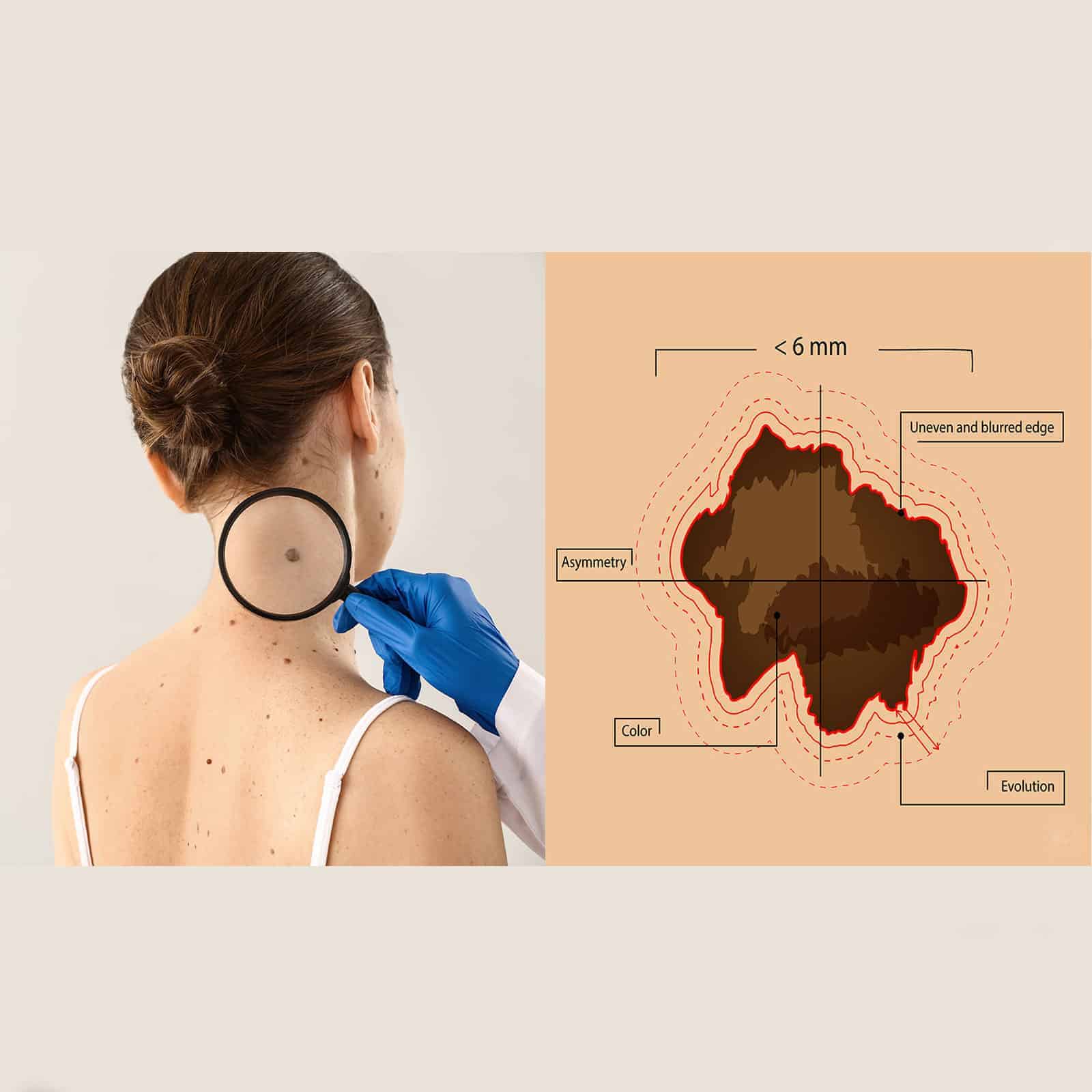According to a study published by the American Academy of Dermatology, melanoma is the second most common form of skin cancer among women under the age of 29.
In this article, we will take a closer look specifically at melanoma and some of the steps that women can take to protect themselves against this disease and other forms of skin cancer.
WHAT IS MELANOMA?
For those who may not be familiar with melanoma, it is a type of cancer that occurs when the cells that are responsible for the skin’s pigment, also known as melanocytes, start to grow abnormally. Unlike other forms of skin cancer, melanoma, which is also known as malignant melanoma and cutaneous melanoma, is more likely to metastasize to other organs if not detected and treated early.
WHAT ARE THE SIGNS OF MELANOMA OR SKIN CANCER?
Although melanoma is more common in women, the symptoms are not too dissimilar from that of men who it. Because melanoma cells are still capable of producing melanin, the moles that form on the skin will often appear brown or black. Additionally, they will be more pronounced on those with lighter complexions.
Melanoma can occur anywhere on the body, including areas not exposed to the sun’s damaging ultraviolet rays. Such areas include the bottom of the feet, hands, and even underneath fingernails.
However, in women, they are most likely to occur on the face, chest, and legs. It is also worth pointing out that melanoma is not limited to skin surfaces only. Several studies have revealed that this form of cancer can develop in parts of the body that most people would never expect, including the rectum, eyes, mouth, and genitals.
WHO IS MOST LIKELY TO DEVELOP MELANOMA SKIN CANCER?
Having established that melanoma affecting the skin is more common in women than men, it is essential to point out that some women are more at risk of developing the disease than others. According to the American Cancer Society, Caucasians are more likely to be diagnosed with the condition than African-American and other darker-skinned women. However, it is worth noting that those with dark skin often develop melanomas on parts of the body where their Caucasian counterparts generally do not, including on the palms of their hands and bottom of their feet.
HOW TO DETECT MELANOMA EARLY
The earlier melanoma can be detected and treated, the better the chances are of surviving this form of cancer. According to the Skin Cancer Foundation, when detected early, the 5-year survival rate for melanoma is as high as 99 percent. To detect skin cancer early, it helps to perform regular self-exams or skin cancer check at least once per month, which can help you quickly notice changes in the appearance of moles or freckles on your skin, not to mention new marks that might be indicative of cancer. In addition to brown or black moles, signs of melanoma can include the following:
- Noticeable changes in the shape, color or size of existing moles
- Existing moles that become itchy or painful
- Existing moles that start to bleed
- New moles or freckles
- Sores that take a long time heal
Most general physicians, oncologists, and dermatologists will advise those who are at high risk of developing melanoma to perform self-exams as frequently as possible. Those who have an above-average risk of developing this particular form of cancer include
- Those with a family history of melanoma
- Those previously diagnosed with melanoma
- Those who have dysplastic nevus syndrome (unusual moles with irregular features)
WHEN SHOULD YOU CONSIDER SCHEDULING AN APPOINTMENT WITH A PHYSICIAN?
If you have noticed any of the symptoms detailed in this article, schedule an appointment with a physician.
It is also smart to schedule routine appointments with a physician if you have a family history of melanoma. In addition, advise your doctor if you meet any of the criteria that may increase your risk of developing the disease. During these appointments, the physician will look at moles and freckles to determine if they may be cancerous.
If the physician suspects cancer, they will likely perform a biopsy. This procedure entails cutting away a part of the mole or other marks on the skin and having it evaluated by a pathologist. If the results confirm cancer, the physician will then outline a course of treatment.
HOW TO PREVENT SKIN CANCER
If you’re a woman who is concerned about developing melanoma, you will be happy to know that there are several things that you can do to reduce your risk of developing the disease, including:
1 – Avoid excessive sun exposure
Although sun exposure is great for vitamin D, too much can damage the skin and increase the risk of developing melanoma. So if you have to be in direct sunlight for any length of time, use sunscreen, preferably one that is SPF 30 or above. Also, wear a hat to protect your scalp and sunglasses to protect your eyes as the disease can form on these parts of the body as well.
2 – Avoid indoor tanning
Studies show that the UV lights and sunlamps used in most tanning salons are just as damaging as natural sunlight. According to a study published by the National Institute of Health, inside tanning can increase the risk of melanoma by as much as 20 percent. This rate rises among those who are start tanning before the age of 30.
3 – Stay healthy, in general
A robust immune system has been shown to help decrease the risk of developing melanoma, according to several studies. Fortunately, there are several ways to boost your immune system naturally, some of which include
- Not smoking
- Consuming a healthy, well-balanced diet
- Exercising
- Maintaining a healthy weight.
- Limiting alcohol consumption
- Getting enough sleep
- Reducing stress
Making healthy lifestyle choices won’t necessarily prevent cancer. However, they can go a long way toward lowering your chances of developing the disease.
HOW AVOIDING OTHER DISEASES MAY LOWER YOUR RISK OF DEVELOPING MELANOMA
According to the American Cancer Society, some diseases can adversely affect the immune system. and increase the risk of developing melanoma. Some of these diseases include HIV and AIDS. However, you can avoid this by practicing safe sex and not partaking in intravenous drug use. Diabetes can also negatively impact the immune system. However, taking insulin as prescribed can help limit the chances of developing melanoma or diabetic complications.
HOW CERTAIN MEDICATIONS CAN POTENTIALLY LEAD TO DEVELOPING MELANOMA
Ironically, some of the medications that many take to treat certain diseases can also negatively impact the immune system. Some of those prescriptions include those for autoimmune diseases, chemotherapy, and transplant rejection drugs. Of course, this is not to suggest that one avoid taking these medications as a way to prevent cancer. However, it is still worth noting.
 HOW DO DOCTORS TREAT MELANOMA?
HOW DO DOCTORS TREAT MELANOMA?
Sometimes, even leading a healthy lifestyle and consuming a well-balanced diet is not enough to prevent cancer. And melanoma is no exception. That said, some of the most common treatments recommended for those who have developed the disease include
- Immunotherapy drugs
- Targeted therapy drugs
- Chemotherapy
- Radiation
- Surgery
Melanoma can be treated by a dermatologist, radiation oncologist, medical oncologist, surgical oncologist, or dermatologist, depending on how far the disease has progressed.
 FINAL THOUGHTS: IS IT POSSIBLE TO PREVENT CANCER?
FINAL THOUGHTS: IS IT POSSIBLE TO PREVENT CANCER?
In summation, it is impossible to prevent cancer. However, there are several things that women can do to reduce their risk of developing melanoma and other skin cancers. So the best way to go about lowering your chances of developing melanoma is by performing self-exams and following the other tips outlined in this article.
Of course, if you suspect that you have skin cancer, you should seek advice from your physician immediately. Early detection can significantly improve your chances of surviving the disease and also improve your overall quality of life.

















